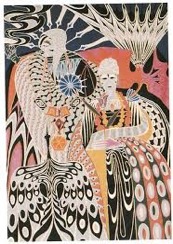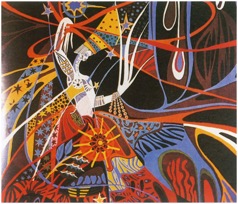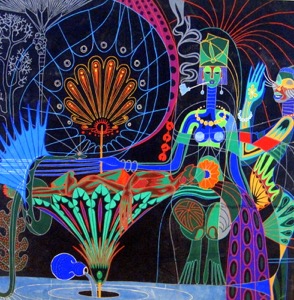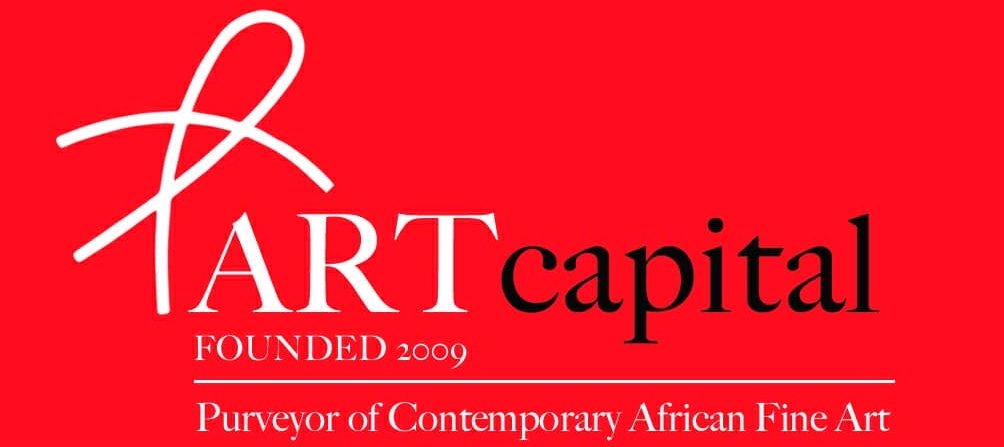PAPA IBRA TALL – LARGER THAN LIFE.
By Nii B. Andrews
During this year’s Fall auction at Sotheby’s in London; a painting by Senegalese artist, Papa Ibra Tall, was sold.
Its pre-auction estimate wasUSD 9,500; it sold for USD 154,400.
The painting – THE WARRIOR (1966), was exhibited at the first World Festival of Black Arts founded by President Senghor and held in Dakar in 1966.
Papa Ibra Tall gifted the work to the musician, Duke Ellington.

Ellington praised Tall’s art in his memoirs: “it is impossible to miss the feeling of Old Africa in each and every stroke of his work”.
The auction catalog states, “This painting demonstrates the artist’s technical skill at creating figurative compositions and the crossover between his designs for tapestries and paintings.
The mass of lines radiating out from and intersecting the figure create a sense of woven threads, integrating the figure within the pictorial field.”

Papa Ibra Tall was famous for his wool tapestries.
They consisted of a dark background surmounted by intricately woven images in bright and vivid colors. The images often featured themes from nature – leaves, vines, animals, thus harking back to art nouveau flourishes.

Juxtaposed to these are elongated human figures with a haunting sculptural quality and a modernist elan.
The tapestries were striking and often dominated any room in which they were hung. But they never ever appeared dated; they had a timeless quality.
Papa Ibra Tall had his formal training at Ecole Spéciale d’Architecture et les Beaux-Arts de Paris in 1955.

In 1959, he organised an exhibition of Black artists then living in Europe for the Second Congress of Black Writers and Artists in Rome.
He met jazz great – John Coltrane and Malcolm X on a visit to the US in 1960.
Like his compatriot Skunder Boghossian, Papa Ibra Tall loved jazz. Both artists were influenced by African-American aesthetics.

Following independence in 1960 Papa Ibra Tall returned to Senegal, and began experimenting with ceramics, screen-printing and tapestry.
He actually installed a loom and began working to develop the modern art of weaving within the country.
Between 1974-1991 his work was part of a major traveling exhibition showcasing contemporary Senegalese art in America, Europe and Asia.

